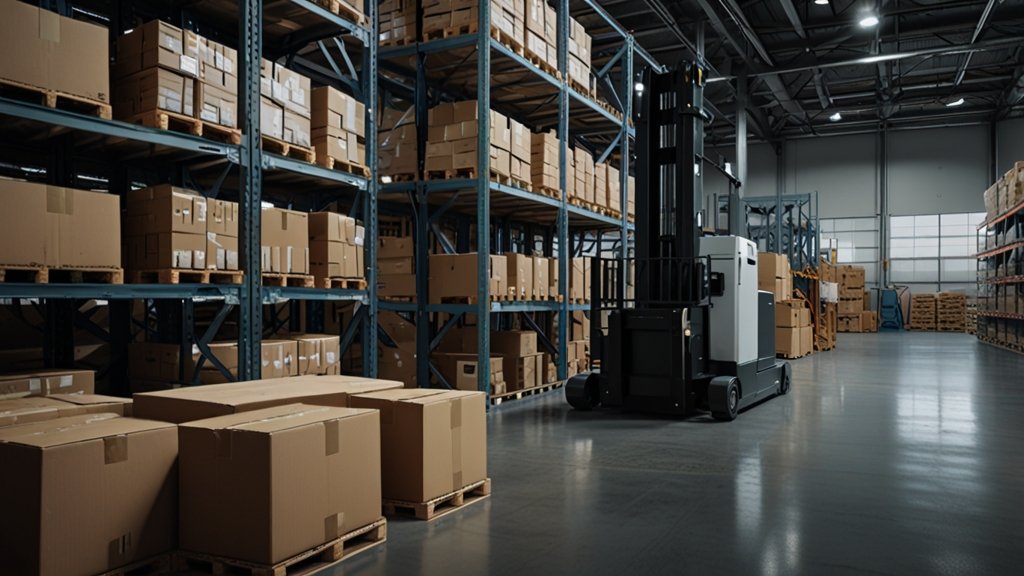Table of Contents
- The Future of Warehousing: Trends and Shifts
- The Impact of Automation on Warehouse Efficiency
- Technologies Driving Warehouse Automation
- Key Benefits of Automated Warehousing
- Preserving the Human Element in Automated Environments
- Steps Toward Implementing Warehouse Automation
- What’s Ahead for Automated Warehousing?
The Future of Warehousing: Trends and Shifts
The world of warehousing is in a state of dramatic transformation. Shoppers expect faster deliveries and greater transparency, forcing companies to upgrade traditional systems and methods. Instead of relying purely on manual labor, modern warehouses are embracing innovative technologies and developing more intelligent workflows. The steady rise of e-commerce, coupled with globalization, has led to a surge in order volumes and increasingly complex supply chains. As a result, today’s warehouses serve as central hubs that power business growth and customer satisfaction.
In response to these pressures, the industry is turning to advanced solutions such as Mobility Solutions Warehouse & Distribution to support increasingly sophisticated operations. This shift is more than just a trend; it’s becoming a core business strategy for enterprises seeking resilience and future-readiness. Analysts at Forbes predict that global spending on warehouse automation will exceed $30 billion by 2026, a figure that highlights how automation is being deeply integrated into the fabric of warehousing. In essence, digital transformation is not just keeping warehouses competitive—it’s actually making new business models possible.
The Impact of Automation on Warehouse Efficiency
Automation represents a critical evolution in warehouse operations. By deploying automation, warehouses can drastically improve speed and reliability, two key performance indicators (KPIs) central to operational excellence. Automated picking, packing, and retrieval systems eliminate the risk of human error, thereby reducing costly mistakes that can damage customer trust. For instance, when automated fulfillment solutions are used, mis-picks and inventory inconsistencies can be reduced by well over 50%, driving improved order accuracy and timeliness.
According to coverage in Supply Chain Dive, nearly 60% of warehouses are now investing in some form of automation to address both labor shortages and cost increases. Automation enables crews to meet short lead times and weather unexpected demand surges reliably. As a result, warehouses that have automated core processes can respond to market changes with greater agility and maintain continuous operations even during disruptions.
Technologies Driving Warehouse Automation
Today, numerous technologies enable the seamless integration of automation in warehouses. Each technology contributes a unique advantage:
- Automated Guided Vehicles (AGVs): These self-operating robots are programmed to follow digital paths throughout a facility, transporting goods from one area to another, reducing manual handling, and supporting round-the-clock workflows.
- Conveyor Systems: Modern conveyor belts, enhanced with embedded sensors, sort and deliver products to exact locations. These smart features allow warehouses to increase throughput and tailor processes to their unique space.
- Automated Storage and Retrieval Systems (AS/RS): By storing and retrieving products automatically, these systems optimize the use of costly warehouse space and accelerate fulfillment cycles. AS/RS is particularly beneficial in high-density or high-velocity environments.
- Artificial Intelligence (AI): AI-driven software analyzes historical data to streamline inventory management and forecast product demand, thus ensuring that inventories align with market needs and reducing waste.
- Internet of Things (IoT): IoT sensors enable real-time tracking of goods, environmental monitoring, and equipment management, providing greater transparency and proactive issue resolution.
The flexibility of these technologies enables companies to tailor solutions to complex and ever-changing requirements. By combining several tools, warehouses can build truly intelligent, scalable ecosystems.
Key Benefits of Automated Warehousing
- Greater efficiency and speed: Automation enables warehouses to process significantly more orders in less time, reducing bottlenecks and smoothing workflows across shifts. As distributors seek to modernize operations in a competitive landscape, adopting a strategic approach to automation becomes essential—not just for speed, but for adaptability and long-term scalability. According to McKinsey’s insights on warehouse automation, a well-planned automation strategy tailored to a distributor’s unique operational profile can lead to measurable gains in efficiency, accuracy, and customer satisfaction.
- Exceptional accuracy: Automated picking, scanning, and sorting minimize the risk of order errors, which lowers returns and boosts customer loyalty.
- Consistent operational cost savings: After the initial investment, the reduction in manual labor, fewer mistakes, and better resource utilization yield long-term savings that support healthy margins.
- Reduced workplace injuries: Moving hazardous or repetitive tasks to machines improves safety and allows staff to focus on less strenuous roles.
- Seamless scalability: Automation makes it much easier to scale operations up or down with seasonal or sudden demand shifts, without the need for hiring sprees or costly delays.
These advantages not only strengthen the operational backbone of companies but also enable them to meet the rising expectations of customers regarding speed and reliability. As a result, firms with automated warehouses usually outperform in both client satisfaction and market resilience.
Preserving the Human Element in Automated Environments
Contrary to common fears, automation is not about replacing all human roles, but rather about enhancing them. As repetitive, manual tasks become the domain of machines, people are needed more than ever to provide oversight, offer creative solutions, and handle exceptions. Human intuition and empathy are invaluable, particularly in managing customer relationships or responding to unique challenges.
To maximize the benefits of automated systems, many organizations are now focusing on upskilling their workforce, teaching employees to program, troubleshoot, and optimize technology. This shift supports higher job satisfaction and reduces attrition, as staff move to more engaging and strategic work. The collaborative future of warehouses relies on blending high-tech solutions with human expertise.
Steps Toward Implementing Warehouse Automation
- Conduct a thorough analysis of current operations to flag inefficiencies and opportunities for automation.
- Define clear goals for automation, tying them to business outcomes such as reducing lead times or lowering operating costs.
- Research providers and pilot relevant technologies to better understand their impact on the unique warehouse environment.
- Develop a robust change management program that keeps staff informed and equipped for new processes through hands-on training.
- Regularly evaluate technology performance, gather feedback, and refine approaches for continuous improvement.
These steps help organizations create a positive, measured path to automation that minimizes disruptions and amplifies success.
What’s Ahead for Automated Warehousing?
Warehouse automation is set for continued acceleration. As robotics, AI-driven analytics, and cloud integration mature, the distinctions between automated and traditional sites will become even more pronounced. Industry authorities note that as remote monitoring and advanced analytics become more prevalent, warehouses will reach new heights in both agility and efficiency.
The future belongs to those who proactively invest in smart automation strategies—whether they’re global supply chain giants or agile small businesses looking to future-proof their operations. Equipped with advanced tools, transparency, and expert teams, tomorrow’s warehouses will drive smarter commerce, quicker shipping, and more satisfied customers across every sector.
YOU MAY ALSO LIKE: Streamlining Project Timelines with Efficient Material Delivery











